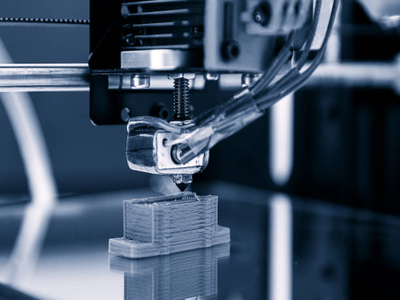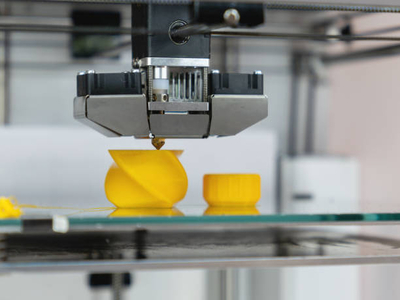When it comes to 3D printing, there are a lot of different factors that come into play in order to produce a high-quality print.
One of the most important of these is the layer height. So, what is layer height in 3D printing?
Layer height refers to the thickness of each individual layer that is printed by the printer.
In this blog post, we’ll discuss what layer height is and how you can use it to produce better prints!
What is Layer Height in 3D Printing?

Layer height is a term that refers to the thickness of layers used when printing a 3D object.
Often, layer height is measured in millimeters, with lower numbers indicating thicker layers and higher numbers indicating thinner ones.
The main reason for using different layer heights is to achieve optimal results in print quality, especially when it comes to surface finish and accuracy of the overall shape of the object.
In general, printing at higher layer heights can produce smoother, more accurate surfaces and eliminates visible layering or steps seen on lower-resolution prints.
However, this often comes at the cost of increased print time and material usage, as each additional layer added will require extra filament to be printed.
Therefore, finding the right balance between speed and quality is key when choosing your ideal layer height when printing 3D objects.
Benefits of Using a Lower Layer Height
When it comes to 3D printing, layer height is one of the most important variables.
It refers to the thickness of each individual layer and can have a major impact on the quality of the final print.
In general, lower layer heights result in smoother surfaces and more detailed prints.
However, they also tend to take longer and require more precision from the printer.
As a result, many people choose to use a higher layer height in order to save time.
But there are several benefits to using a lower layer height, even if it means sacrificing some speed:
- First of all, lower layer heights generally result in stronger prints. This is because the layers have less opportunity to separate from each other when they are closer together.
- Additionally, lower layer heights can produce smoother surfaces and finer details. This is due to the smaller size of the individual layers, which results in less visible ridges and imperfections.
- Finally, lower layer heights often allow for better adhesion between layers. This is because the molten plastic has less time to cool and solidify before it comes into contact with the next layer.
Consequently, using a lower layer height can provide a number of benefits, even if it means sacrificing some speed.
Watch this SUPER DETAILED video showing which layer heights are the strongest:
Drawbacks of Using a Lower Layer Height
A lower layer height results in a higher resolution, meaning that finer details can be captured.
However, there are some drawbacks to using a lower layer height:
- First, it generally takes longer to print an object when using a lower layer height. Each individual layer is thinner, and therefore requires more time to produce.
- Additionally, a lower layer height uses more material, since more layers are needed to create the desired effect. As a result, using a lower layer height can be more expensive in terms of both time and money.
- Finally, very thin layers can be more difficult to print accurately and have a greater margin for error.
For these reasons, it is important to carefully consider the pros and cons of using a lower layer height before beginning a print job.
Read More: Pros and Cons of 3D Printing. We cover the benefits and potential downsides of 3D printing to help you decide if it’s right for you!
What is the Best Layer Height for Your Project?

There are many factors to consider when choosing the best layer height for your 3D printing project.
The most important factor is the resolution of your printer.
A higher resolution printer will be able to produce finer details, so you will want to use a smaller layer height.
However, this also means that your print will take longer to complete.
If you’re looking for a balance between speed and detail, a medium-layer height is a good choice.
Another factor to consider is the type of material you’re using.
Some materials are more difficult to print with a small layer height, so you may need to use a larger layer height to ensure a successful print.
In general, you’ll want to use the smallest layer height possible to get the best results.
Finally, it’s important to consider your own personal preferences.
If you don’t mind sacrificing some detail for a faster print, then a larger layer height may be the best choice for you.
But, if you prefer intricate prints with finely-detailed features, then you’ll need to use a smaller layer height.
Ultimately, the best layer height for your project depends on your own individual needs and preferences.
Read our related article, What is the Thinnest a 3D Printer Can Print?
Using Layer Height to Produce Better Prints
As a general rule, thinner layers produce better prints.
This is because they allow not only for greater detail and a smoother surface finish but are also less likely to warp or distort during the cooling process.
However, there are also some drawbacks to using very thin layers.
- First, it can significantly increase the printing time.
- Second, it can put extra strain on the printer, leading to higher maintenance costs.
As a result, finding the right balance between layer thickness and print quality is an essential part of successful 3D printing.
Conclusion
What layer height you should use depends on a variety of factors, including the resolution of your printer, the type of material you’re using, and your own personal preferences.
To get the best results, you’ll want to use the smallest layer height possible to get the best results.
Using a thinner layer height will produce better prints with finer detail and a smoother surface finish.
However, it’s important to keep in mind that thinner layers will take longer to print and may put extra strain on your printer.
Read More